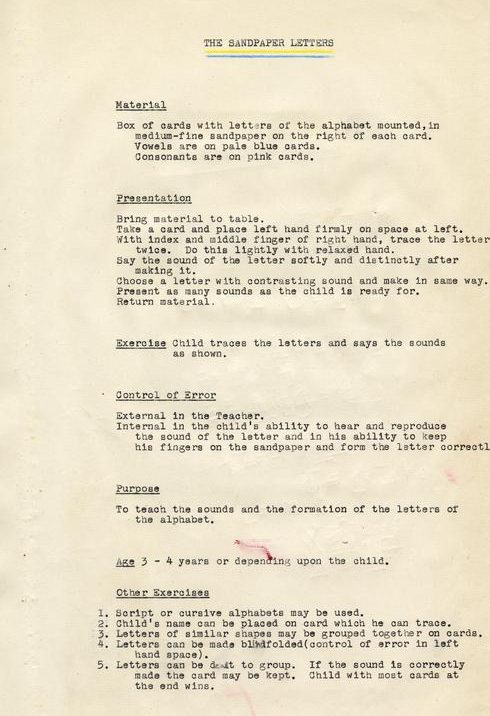In the film Demonstrating Montessori (1980), Montessori teachers demonstrate exercises designed to teach children practical life, language, mathematics and geography, and to develop sensorial awareness. These exercises include pouring water, matching words with pictures, transitioning from tangible mathematical materials (gold beads) to abstract materials (cards with written numbers), identifying land, air, and water, and placing cylinders on a grid according to size.
The UConn Library is committed to making our collections fully accessible, but some older media, such as the video shown here, do not allow us to provide captions or transitions on this webpage. Contact the staff at archives@uconn.edu to ask for a transcript of this video.
While sitting next to the child, the teacher first demonstrates the activity. The teacher then invites the child to join in. Finally, the child repeats the activity on their own.
The first activities a child is introduced to are rooted in sensory experiences. As the child progresses, the activities grow more complex and abstract.
The teacher sits directly next to the student while demonstrating activity.
Children use sandpaper letters to learn sounds and the shape of letters in the alphabet. Sandpaper letters are typically used by children ages 3-4. However, children work at their own pace in a Montessori classroom, so the age of the students using sandpaper letters can vary, depending on the child’s needs.



